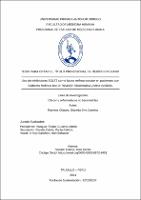Uso de inhibidores SGLT2 como factor nefroprotector en pacientes con Diabetes Mellitus tipo 2: Revisión Sistemática y Meta-Análisis.
Abstract
Evaluar si el uso de inhibidores SGLT2 es factor nefroprotector en
pacientes adultos con Diabetes Mellitus tipo 2.
Material y métodos: Este estudio de revisión sistemática y metaanálisis, siguió
las directrices PRISMA 2020. Se realizó búsqueda estratégica en cuatro bases
de datos: Pudmed, Web of Science, Scopus y Embase. Se incorporaron ensayos
clínicos aleatorizados, los artículos fueron almacenados y seleccionados en el
software Rayyan: posteriormente la extracción de datos se realizó en Microsoft
Excel 2019. El riesgo de sesgo se analizó con la herramienta RoB 2.0 de la
Colaboración Cochrane. El meta-análisis mediante el software libre RStudio; la
evaluación de la calidad y la certeza de evidencia se realizó en el programa
GRADEpro.
Resultados: Se incluyeron 12 ensayos clínicos aleatorizados en el meta
análisis. A las 12 semanas no se encontró diferencia significativa respecto a la
media en la tasa de filtración glomerular (TFG) en el grupo intervención
comparado con placebo (MD: 0.78; IC 95%: -1.36 a 2.92; I2=0%; p=0.43) Sin
embargo, los inhibidores SGLT2 redujeron significativamente la pérdida
progresiva de la TFG a los 2 años (RR: 0.66; IC 95%: 0.49 a 0.89; p<0.001) de
igual manera a los 3, 4 y 7 años.
Conclusión: Los inhibidores SGLT2 disminuyeron significativamente la pérdida
progresiva de la TFG frente a placebo, a mayor tiempo de duración del
tratamiento. Asimismo, la presión arterial sistólica y diastólica tuvo efecto
beneficioso reduciendo así el riesgo cardiovascular; también redujo el porcentaje
de HbA1c y peso corporal To evaluate whether the use of SGLT2 inhibitors is a nephroprotective
factor in adult patients with type 2 diabetes mellitus.
Methods: This systematic review and meta-analysis study followed the PRISMA
2020 guidelines. A strategic search was performed in four databases: Pudmed,
Web of Science, Scopus and Embase. Randomized clinical trials were
incorporated, articles were stored and selected in Rayyan software: subsequently
data extraction was performed in Microsoft Excel 2019. Risk of bias was analyzed
using the RoB 2.0 tool of the Cochrane Collaboration. Meta-analysis was
performed using the free software RStudio; the evaluation of the quality and
certainty of evidence was performed in the GRADEpro program.
Results: Twelve randomized clinical trials were included in the meta-analysis. At
12 weeks, no significant difference was found with respect to mean glomerular
filtration rate (GFR) in the intervention group compared to placebo (MD: 0.78;
95% CI: -1.36 to 2.92; I2=0%; p=0.43) However, SGLT2 inhibitors significantly
reduced the progressive loss of GFR at 2 years (RR: 0.66; 95% CI: 0.49 to 0.89;
p<0.001) as well at 3, 4 and 7 years.
Conclusion: SGLT2 inhibitors significantly decreased the progressive loss of
GFR compared to placebo, with longer treatment duration. Likewise, systolic and
diastolic blood pressure had a beneficial effect, thus reducing cardiovascular risk;
it also reduced the percentage of HbA1c and body weight.
Collections
- Medicina Humana [2969]


